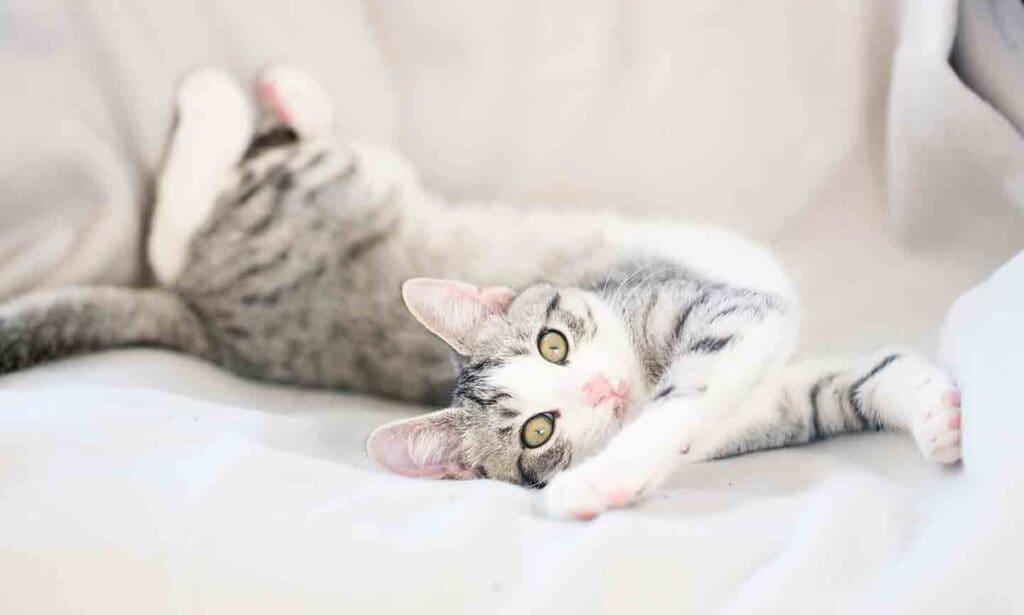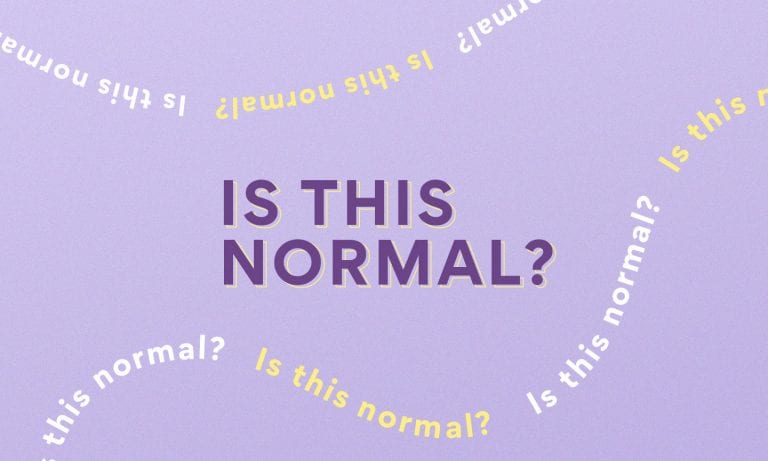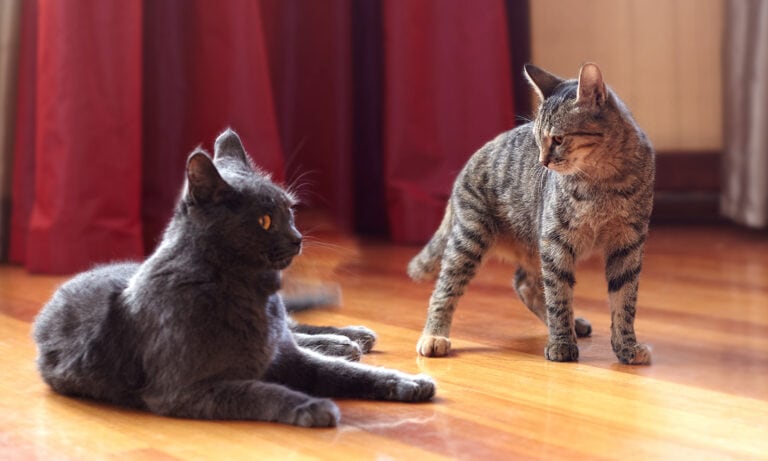In This Guide
Consider the Context
Dr. M. Leanne Lilly, DVM, DACVB, is a veterinary behaviorist: someone who is trained as a veterinarian but specializes in treating behavior issues in animals. According to Lilly, some cat behaviors are pretty straightforward, while others can be harder to interpret.
The key, she says, is to look at the whole picture when a behavior is occurring. Depending on the context, one posture or behavior can mean different things.
One example Lilly gives is pouncing. Pouncing can be part of play. “Rough-and-tumble kittens will take turns pouncing on each other,” says Lilly. But pouncing can also be aggressive cat behavior if a cat is trying to eject another feline from their personal space. Finally, pouncing can be meant playfully but also be received as inappropriate. Think of when your cat pounces, and bites at your feet and ankles.
The main takeaway: You may need to consider more than just your cat’s body language to know how they’re feeling. The key to understanding your cat’s mood is to look at everything happening around them in the moment.
That said, here are the most common reasons why your cat moves or behaves in the way they do.
Your Cat’s Tail
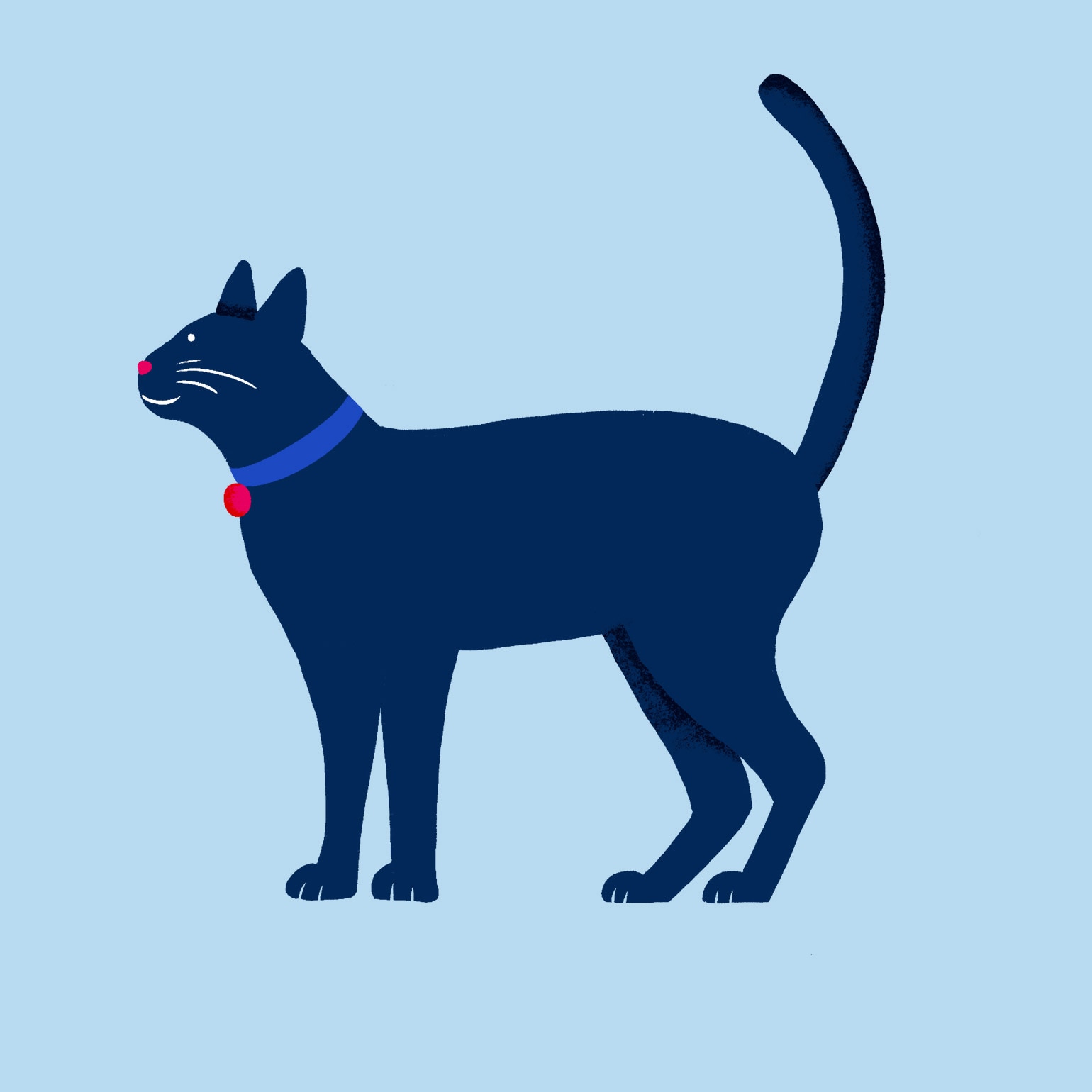
High in the Air
When your cat holds their tail straight up in the air, it means they are feeling alert. Lilly says this doesn’t necessarily have a positive or negative meaning: They’re just noticing the world around them. Depending on the situation, and the rest of the cat’s body position, they could be excited, happy, stressed or anxious.
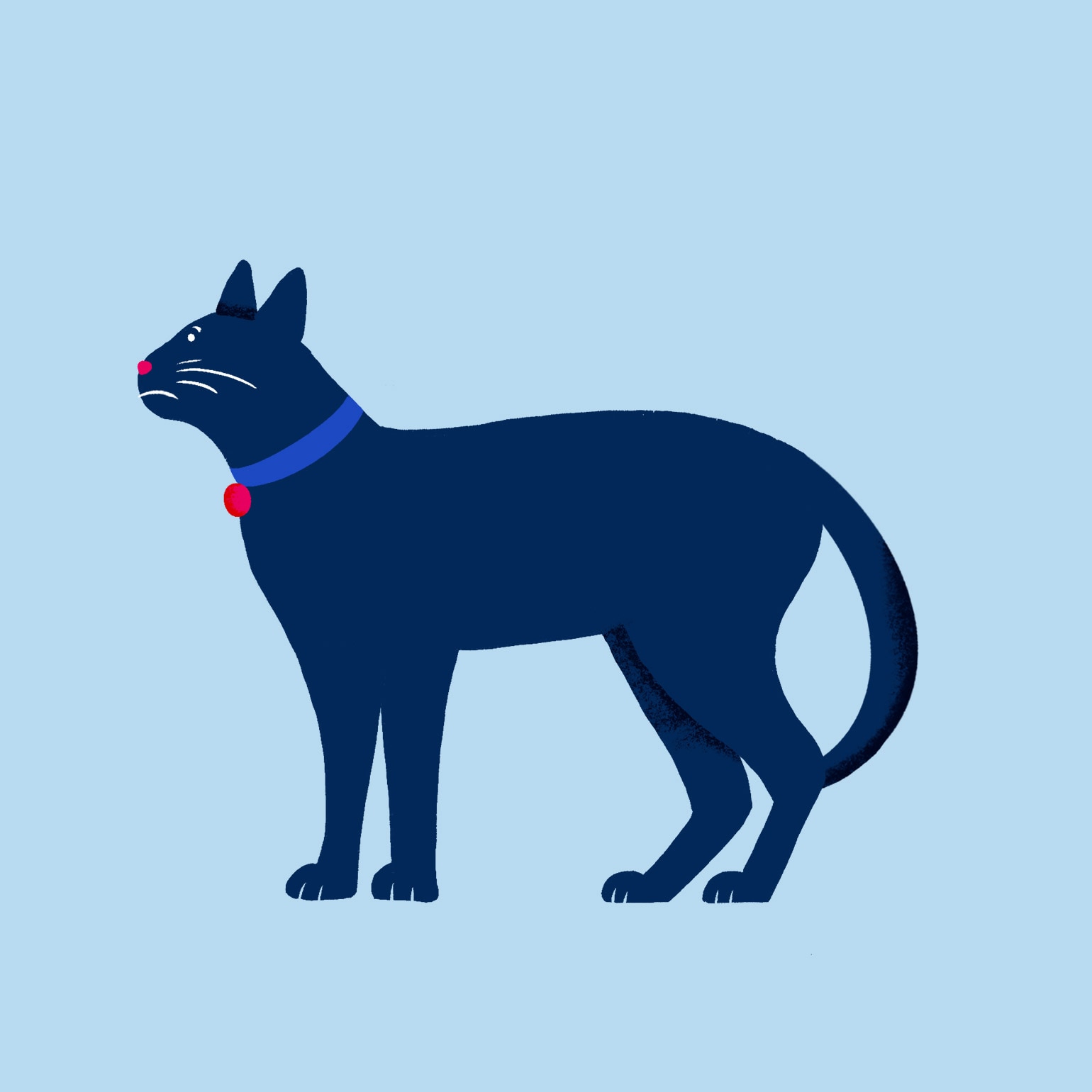
Low or Tucked Tail
If you see a cat with their tail down low, it means they’re feeling uncomfortable. It’s important to note the more worried and afraid the cat feels, the closer they will pull their tail towards their body. A cat with a tail tucked completely underneath? That’s an extremely terrified feline friend.
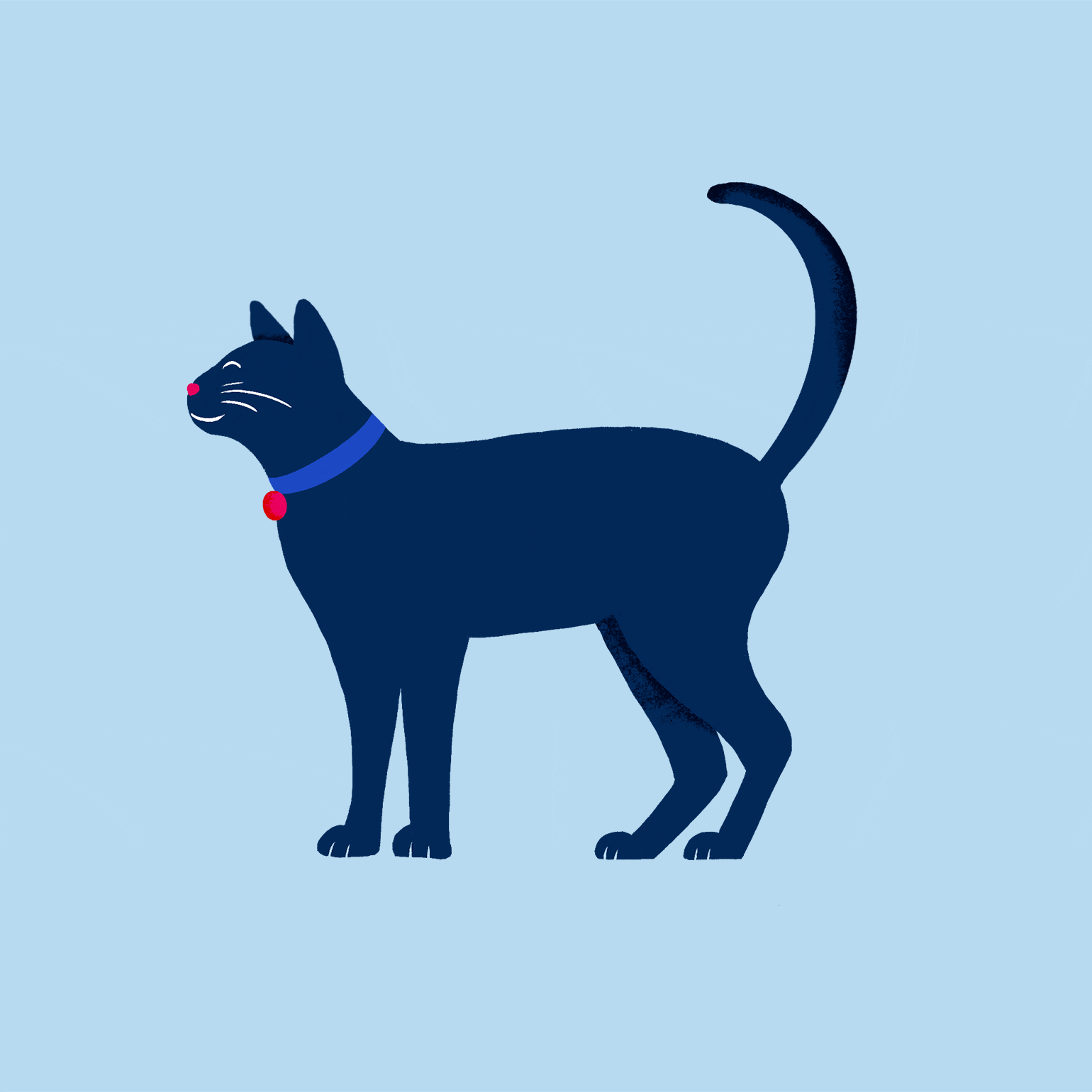
Swishing or Flicking
These two motions are actually slightly different. Swishing refers to the fluid, soft motion of a cat’s tail that generally happens when a cat is feeling relaxed or interested in their surroundings. Flicking just refers to the tip of a cat’s tail. When you see a cat’s tail flicking, this is a sign of predatory behavior: either they are getting ready to attack or to play.
Your Cat’s Ears
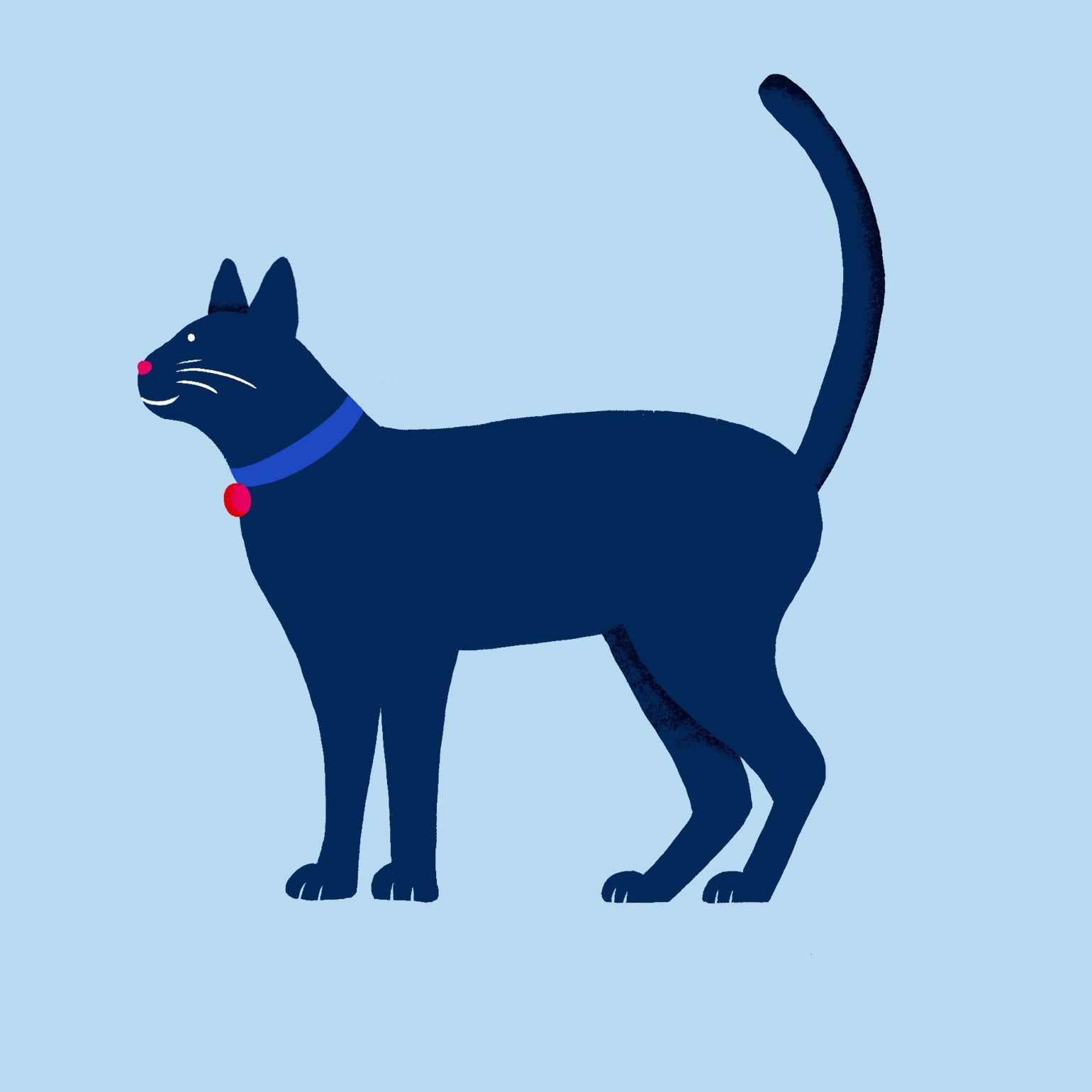
Ears Up High
This usually means your cat is listening to something and is on alert. This could either be a positive or negative sound, but the cat is interested and alert to whatever they’re hearing.
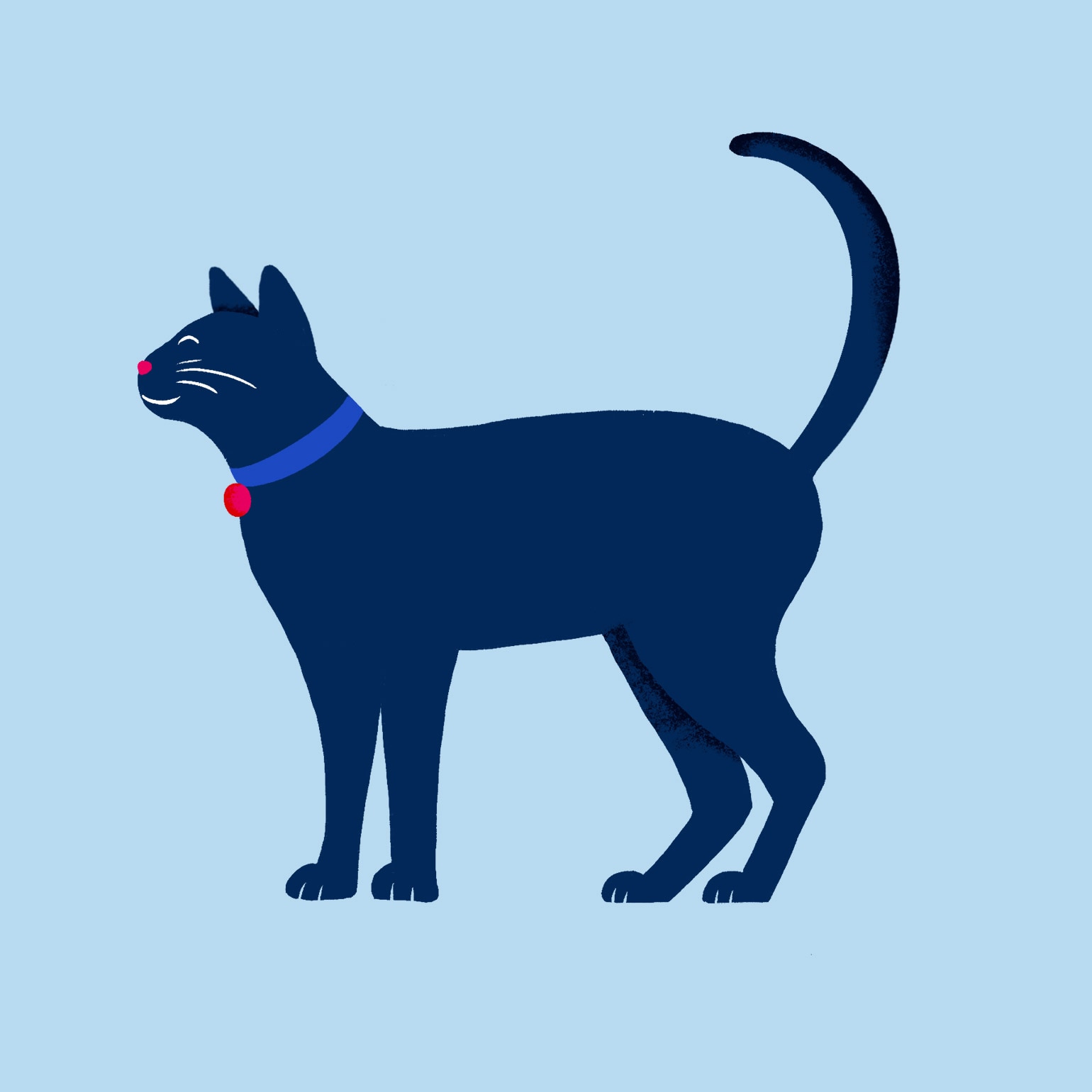
Ears Forward
Typically, a feline with their ears forward is just a relaxed cat who’s feeling comfortable. If you want to know how relaxed the cat is, observe the rest of the cat’s posture and body language.
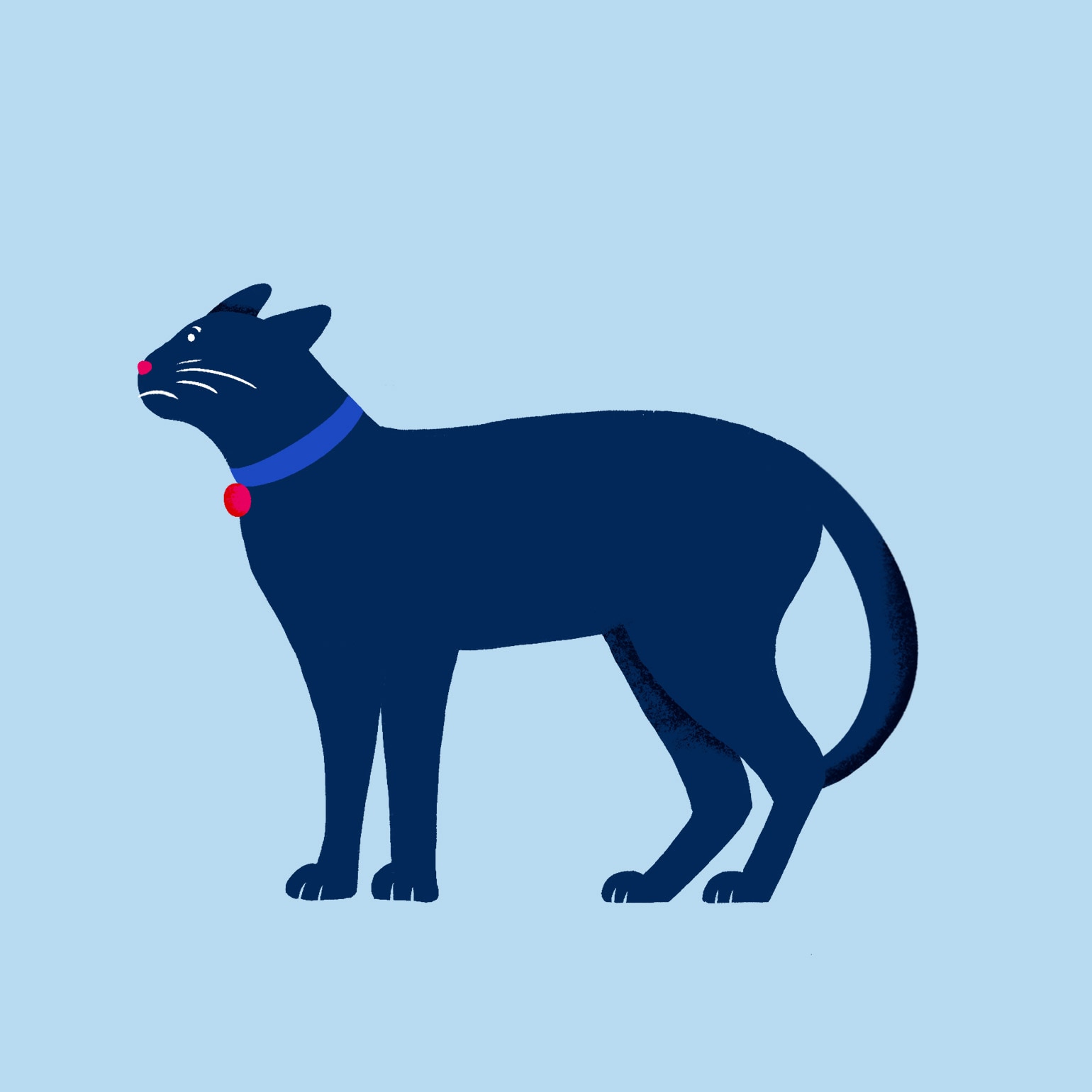
Ears Flattened
When a cat flattens their ears until they push out the sides and look like airplane wings, the cat is feeling uncomfortable. In general, the more the cat's ears flare out to the side, the more threatened they feel—so, give a wide berth to a cat with their ears pulled all the way back and flattened against their head, as they may interpret any movement toward them as an attack and act to protect themselves.
Is your cat stressed? Consider these calming solutions.
Your Cat’s Eyes
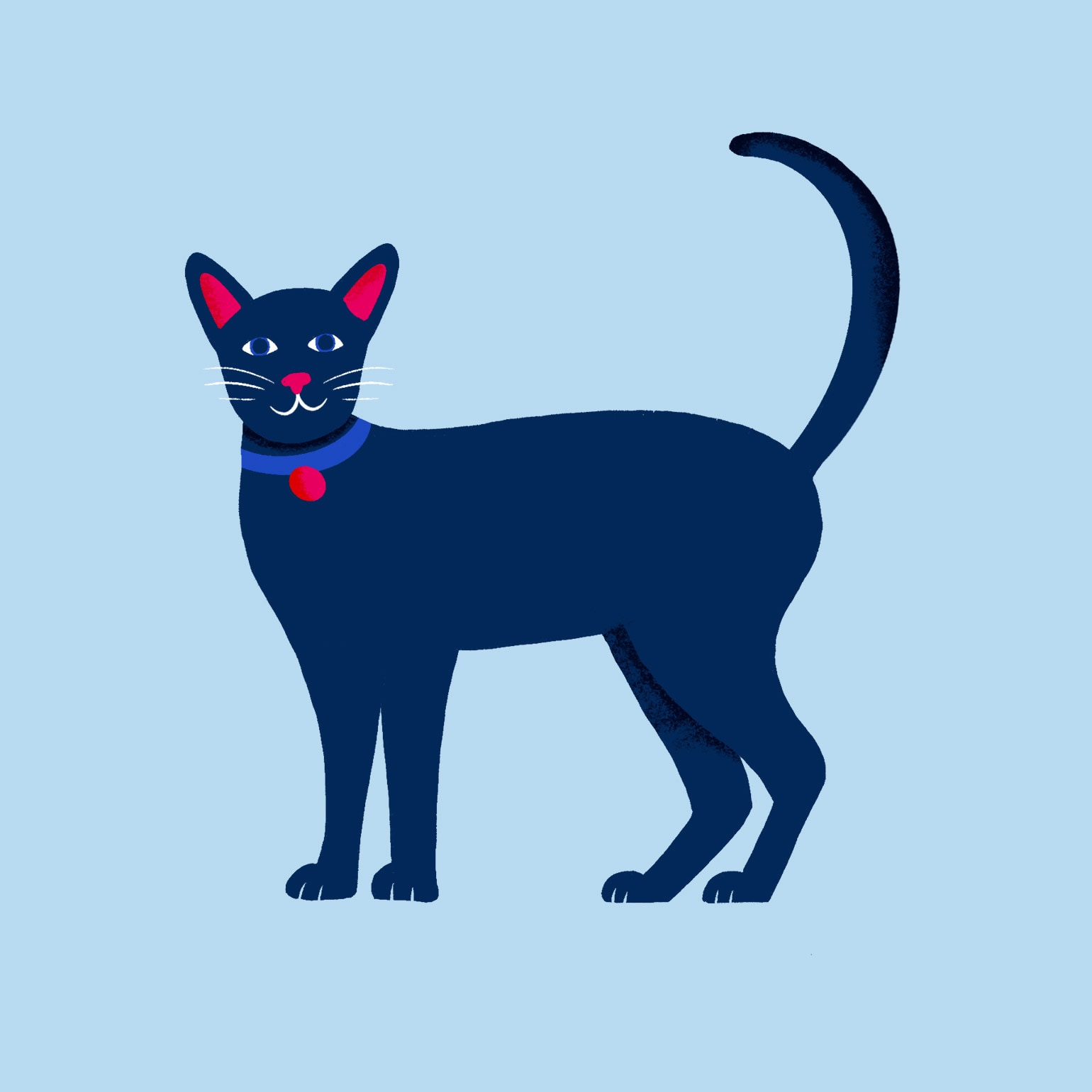
Dilated Pupils
Compared to humans, cats’ pupils can dilate (grow larger) much more, enabling them to see much better in the dark than we do. But often, if you’re seeing dilated pupils in the daytime, it’s just a sign of alertness. Again, alertness can be positive or negative. Your cat may be happy and excited to play, and experience dilated pupils.(You’ve probably noticed how wide those pupils get right before they pounce on a toy.) But Lilly says veterinarians also often notice cats’ pupils are dilated because cats are on high alert in the new and often nerve-wracking environment of a vet’s office.
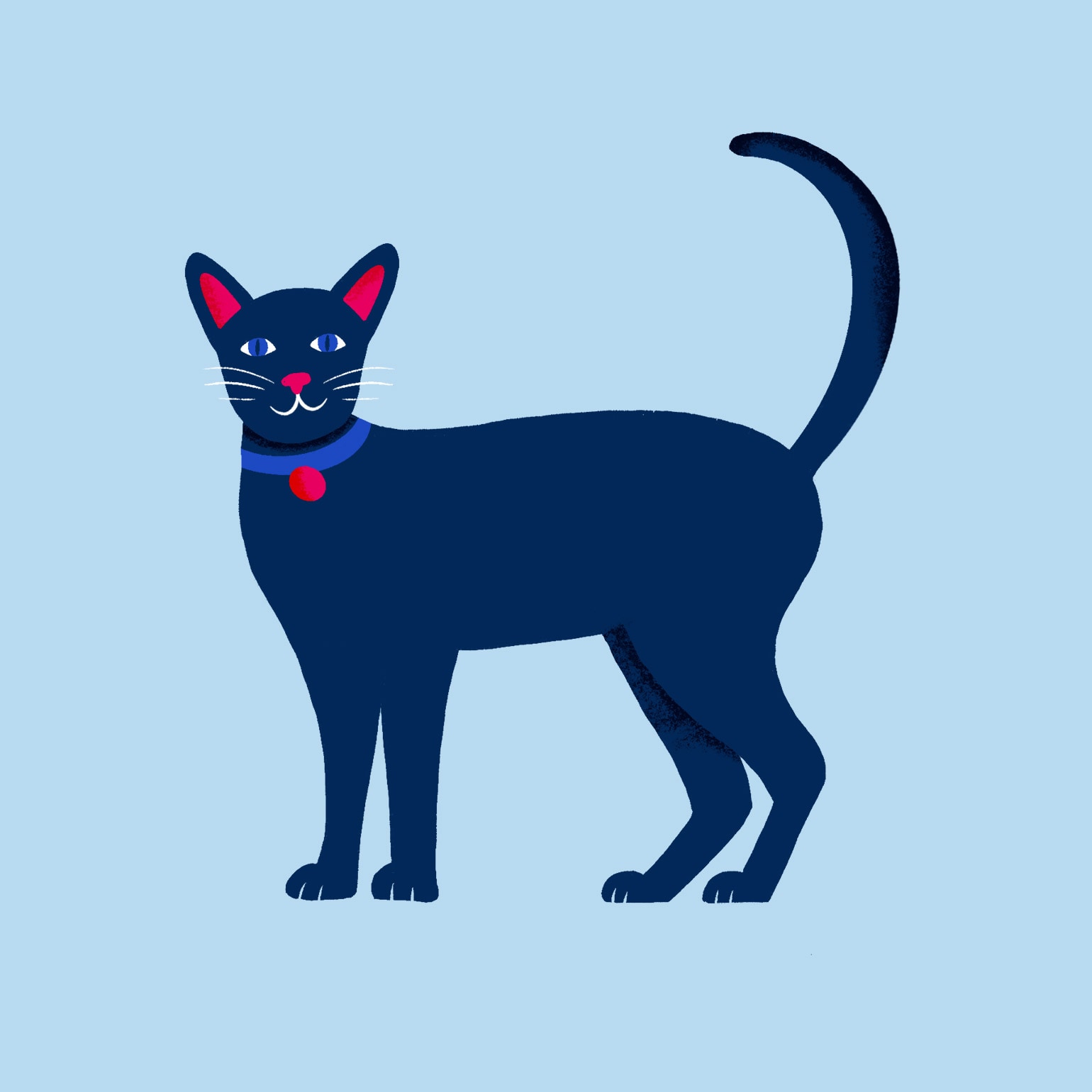
Narrow Pupils
On the flip side, a cat with narrow, thin pupils is feeling nice and relaxed. You may notice narrow pupils when a cat wakes from a nap, or while they’re enjoying some peaceful pets in your lap.
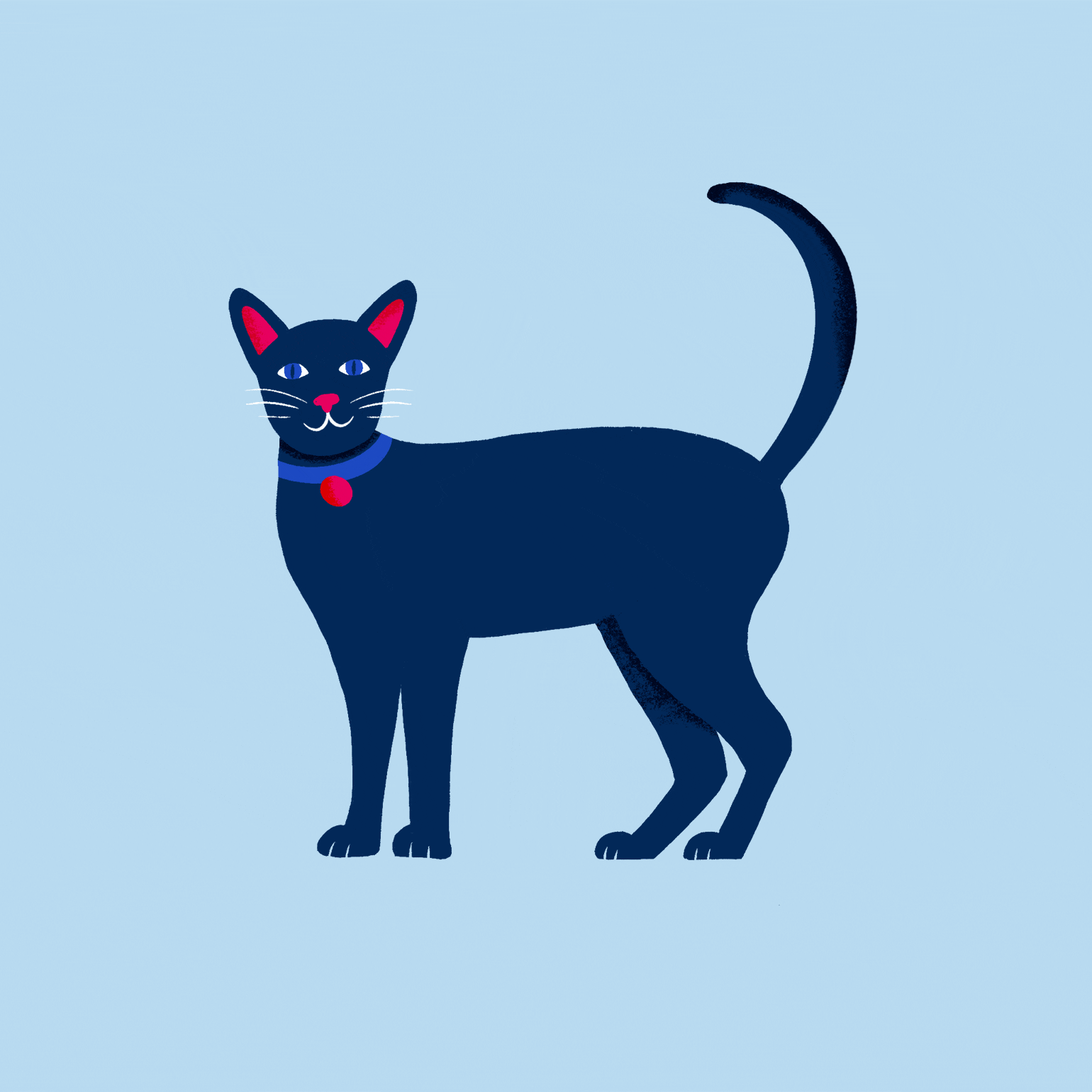
Slow Blink
Cats slow blink at other cats or humans as a way of communicating that they’re not threatening. It’s a social behavior to tell others they’re calm and ready to get along. You can actually slow blink at your cat, and, many times, they will slow blink back and approach you—because you’ve indicated that you are a nice person who wants to be friends.
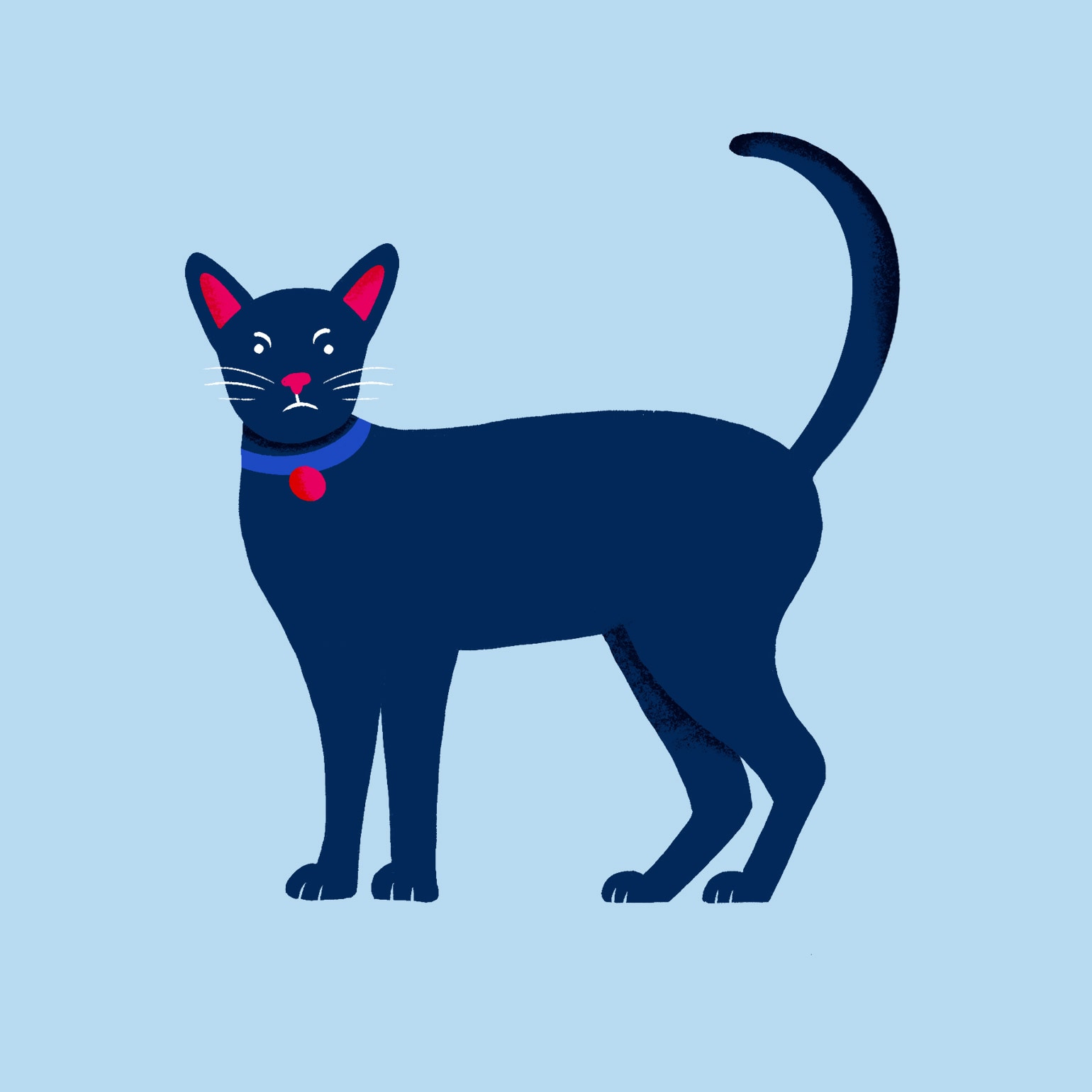
Scowling
We may think of the classic “grumpy cat” as cute and adorable, but your cat typically shouldn’t have a grumpy or scowling look on their face. If your cat's eyebrows are more drawn down and together than usual, it could mean they are uncomfortable or even in pain. Lilly recommends the Feline Grimace Scale app, which can help cat parents identify whether their cat is in pain based on their cat’s facial features and movements.
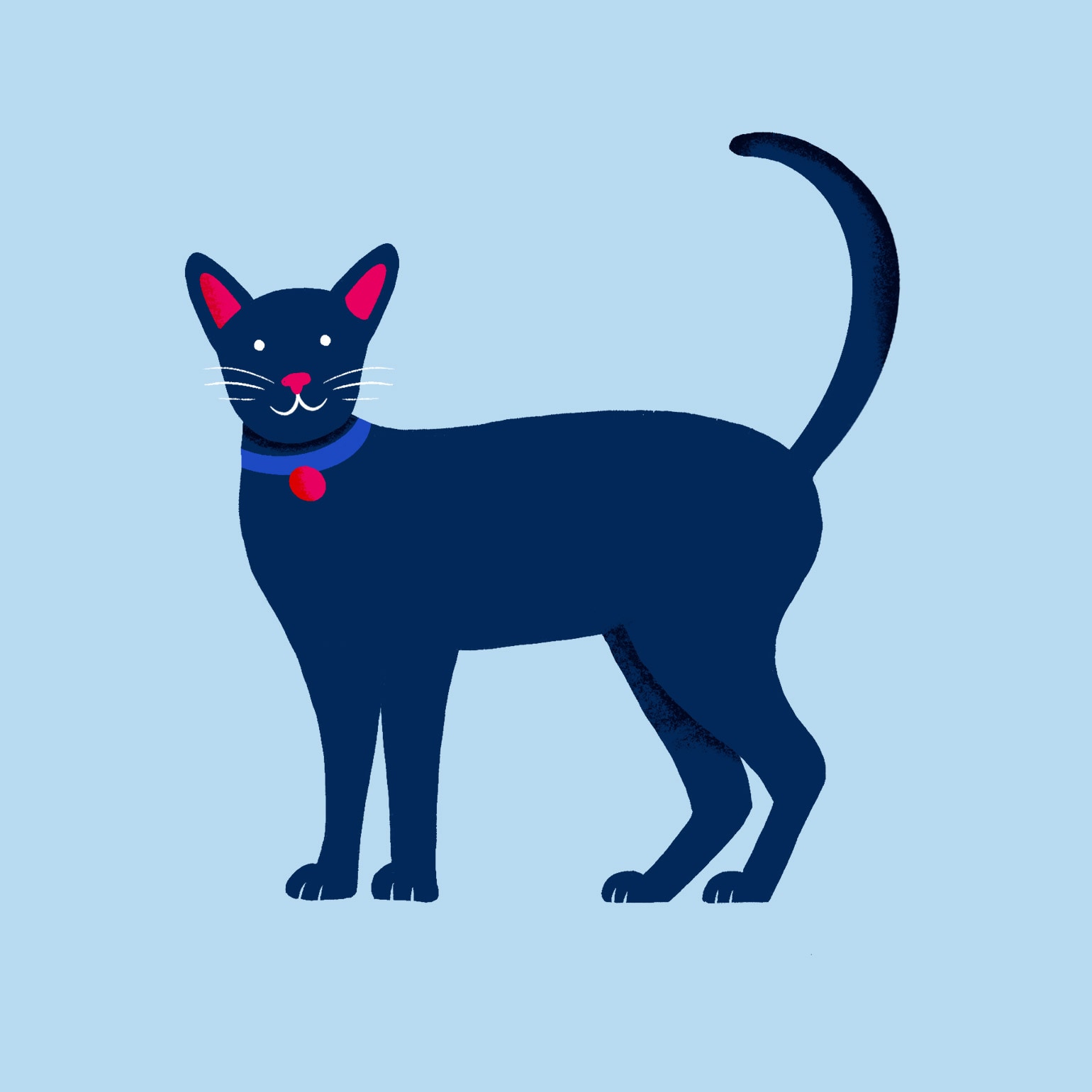
Eye Contact
Cats sometimes make eye contact with humans as a care-seeking behavior. If it’s dinner time, they may stare at you to get your attention (and to get access to that tasty food). Like dogs, cats may also engage in a hard stare before they attack, but, typically, cat behaviors are quieter—and involve microaggressions like sitting in another cat’s favorite spot, rather than launching an outright attack.
Your Cat’s Back

Arched
A cat with an arched back may be uncomfortable or scared; think of the classic Halloween cat silhouette of the cat with their back arched and their fur puffed. That’s clearly a cat that’s been spooked. However, a cat’s back can also arch while being petted. But in that case, it’s probably obvious the cat is just enjoying some cuddles.
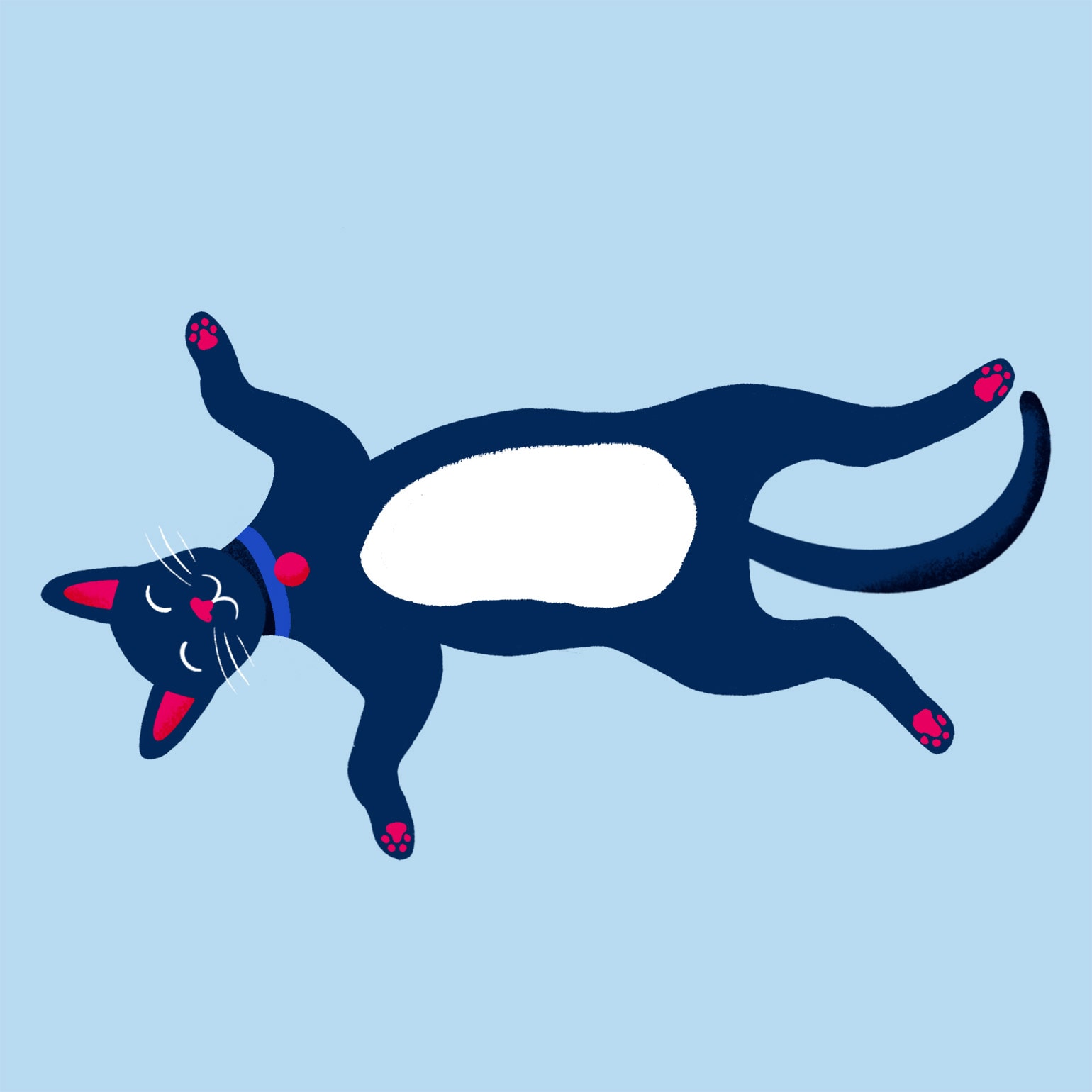
Belly Up
Cats are flexible and like to lounge on their backs with their bellies up. But in most cases, that is not an invitation for belly rubs. Most—but not all—cats do not enjoy pats on their belly. The belly is a sensitive area for cats. It’s where many of their vital organs are stored, making them vulnerable to attack by predators. “Cats have no problem sleeping in that position, taunting us with their cute little fluffy bellies, which maybe they don't want us to touch, to our own chagrin,” says Lilly.
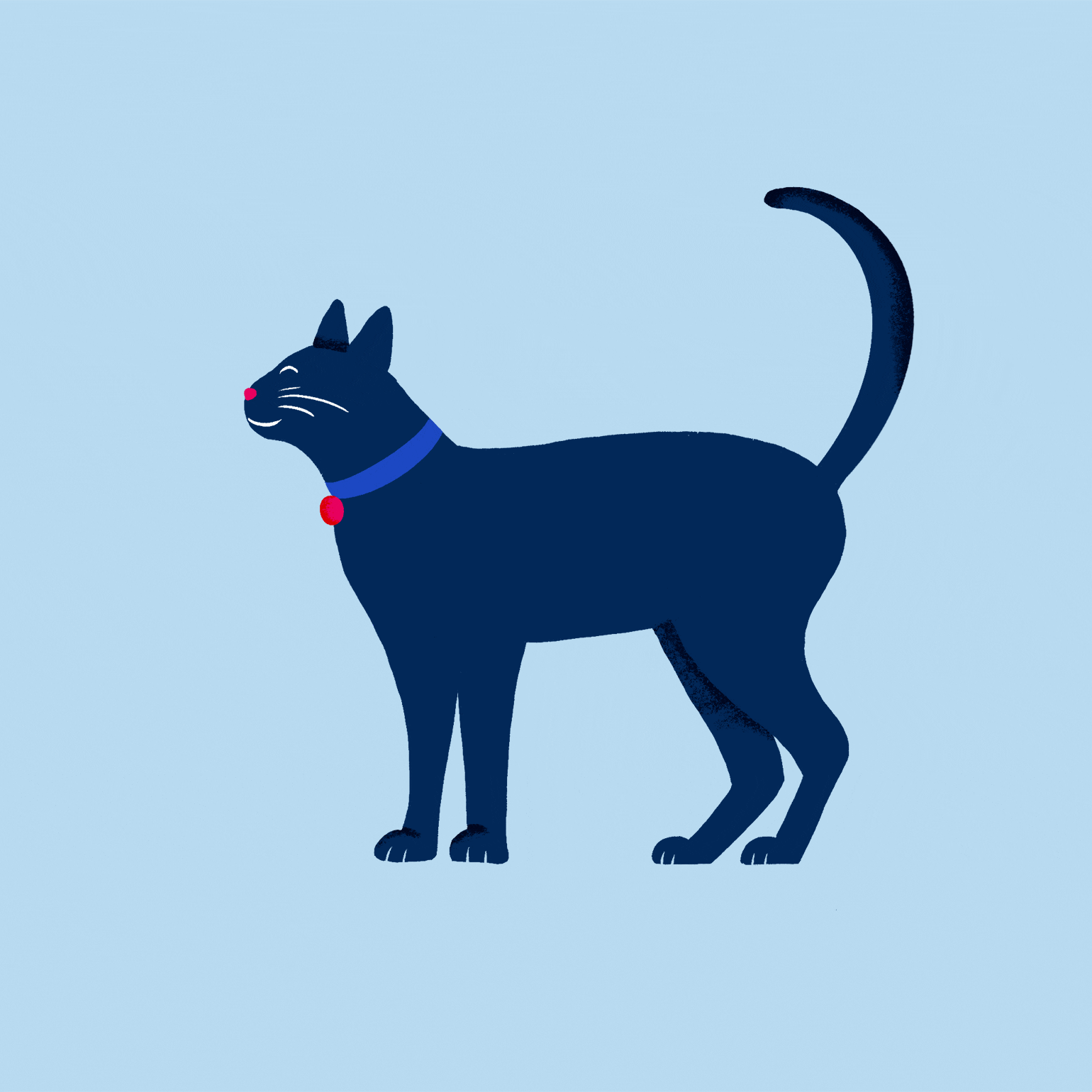
Stretching
It’s normal for cats to stretch both before and after sleeping. However, cats also use stretching as a displacement behavior—a behavior that’s out of context to help soothe themselves. Humans might twirl their hair or bite their nails; cats stretch. After a stressful encounter, a cat might stretch just to help move on from the nervous feeling of that interaction.
Your Cat’s Body Posture
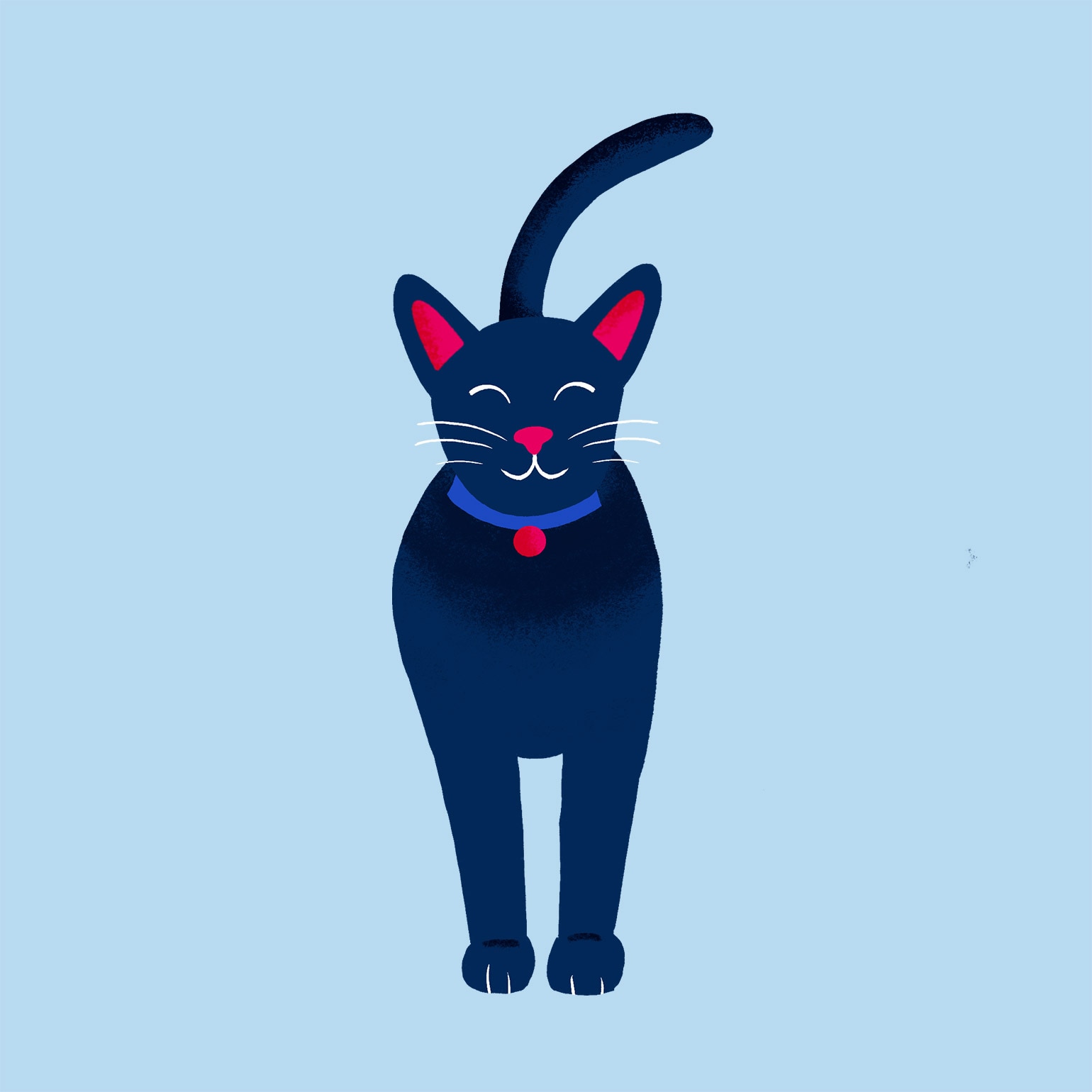
Facing You Head-on
If a cat faces you head-on, it can mean a couple different things. Maybe they’re ready to pounce; after all, if you’re planning to attack something, it’s just easier to look at it head-on. Alternatively, cats who are more social may simply prefer full-frontal greetings for other cats and humans.

Crouched
This is another posture that can have several meanings. A cat might crouch because they’re afraid and are trying to become as small as possible. It’s possible they’re in pain. Or, they may see something they want to pounce on or play with, like a toy or another cat, so they’re crouching so they can spring into action. It’s important to look at the context to know what your cat is feeling.
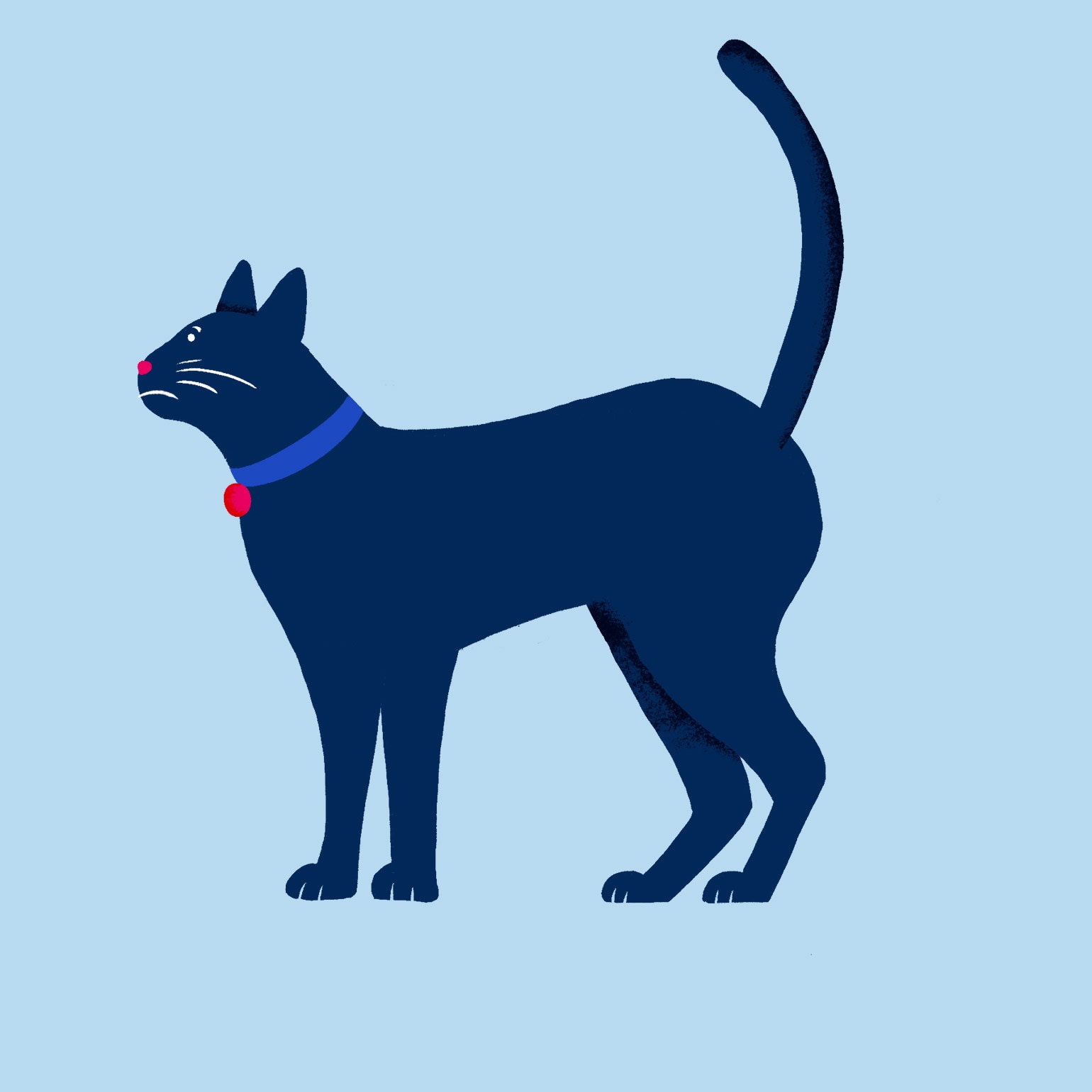
Frozen in Place
When your cat is frozen in place, this is a sign they are afraid. The theory is that they see something they don’t like, and they’re hoping if they stand still enough, it will just go away.
Your Cat’s Behaviors
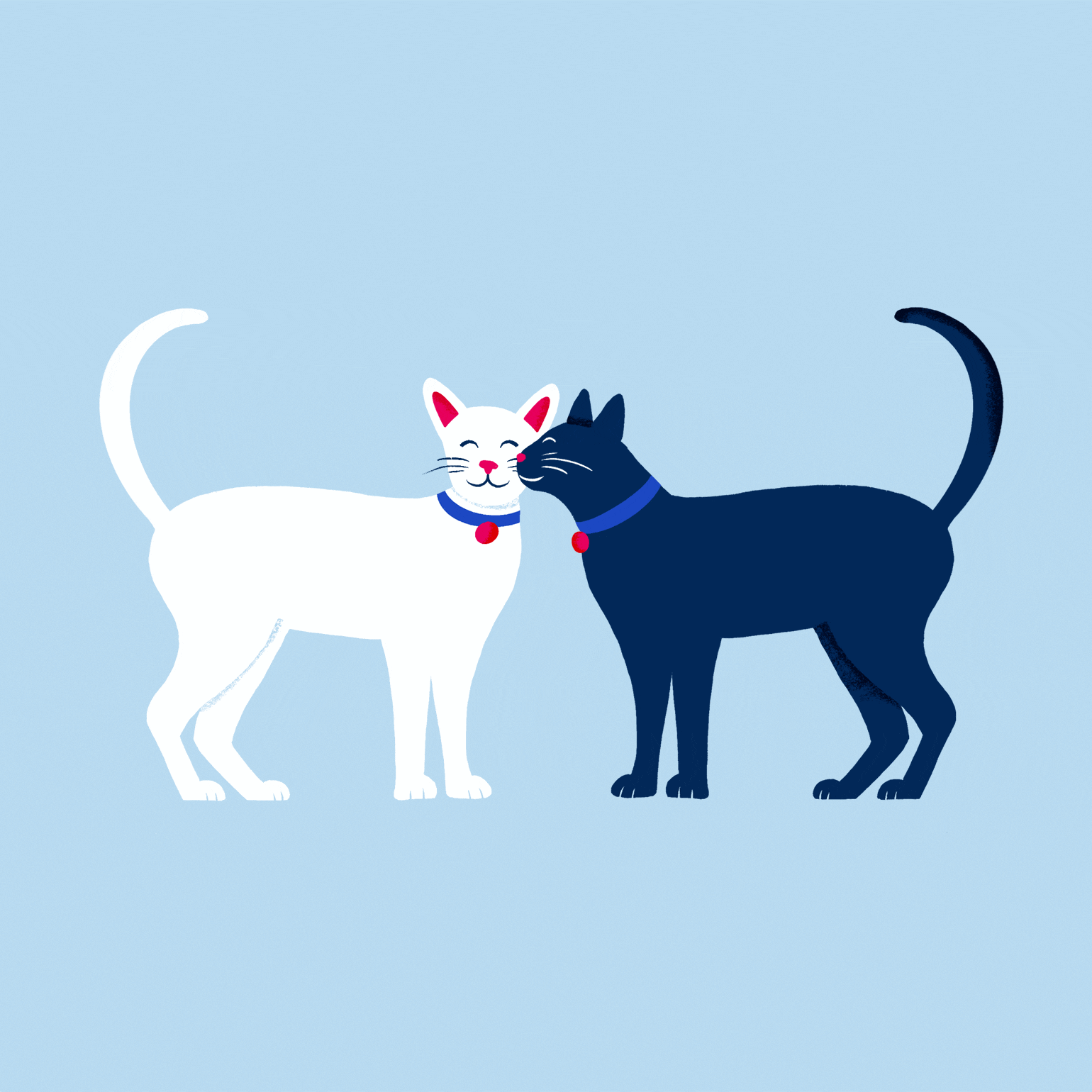
Head Rubbing
Cats rub their head on other cats or humans to deposit their smell. Lilly says this is a prosocial behavior, and it's a way for cats to indicate who is part of their social “in-crowd.” At the end of the day, your cat might approach you and start rubbing their head on you to make sure you smell like you belong to their club. Find out more about why cats rub against you.
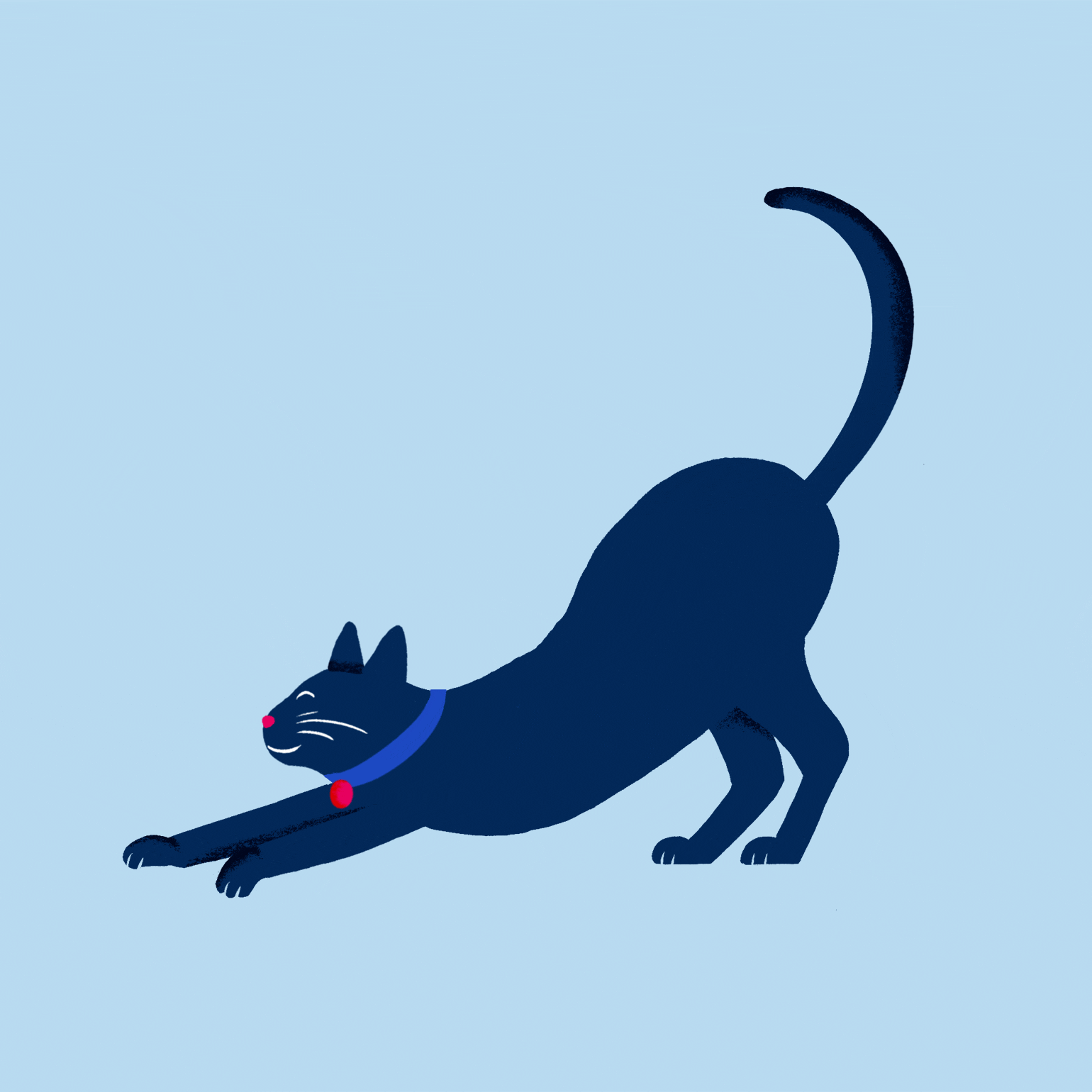
Purring
In general, when your cat purrs, it means they’re feeling happy and content. However, cats also purr as a self-soothing mechanism. Lilly says some mother cats will purr while having contractions during labor. A cat who is in pain or feeling uncomfortable may be purring to help calm themselves, not because they’re totally OK. Again, it’s important to look at the whole picture. Find out more about why cats purr.
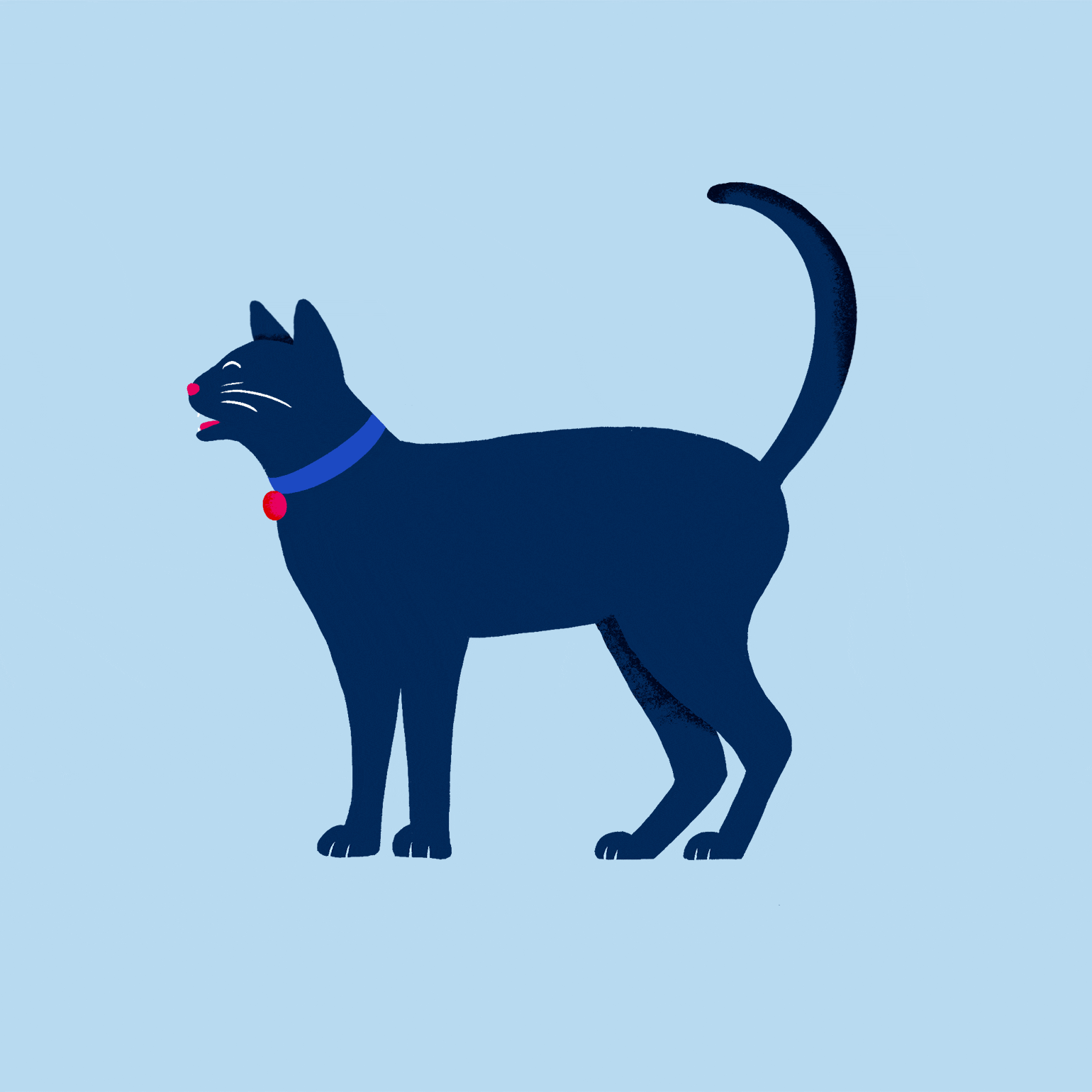
Chirping
If you hear your cat chirp or trill, it’s usually during play. This sound can be directed at cats or humans. Cats are prey animals, and they may be trying to attract a bird by chirping. Usually, cats don’t want to let a target know they’re about to pounce. But, since cats have been domesticated, they haven’t had to refine these skills—so they keep chirping away. Find out more about why cats chirp.

Kneading
When you see your cat pushing with their paws over and over again on a surface, that’s kneading. It almost looks like they are kneading bread or “making biscuits” with their paws. The behavior is associated with nursing, and it's a self-soothing mechanism, like thumb-sucking in humans. If your cat is displaying this behavior, they’re probably feeling happy and content. Find out more about why kitties “make biscuits.”
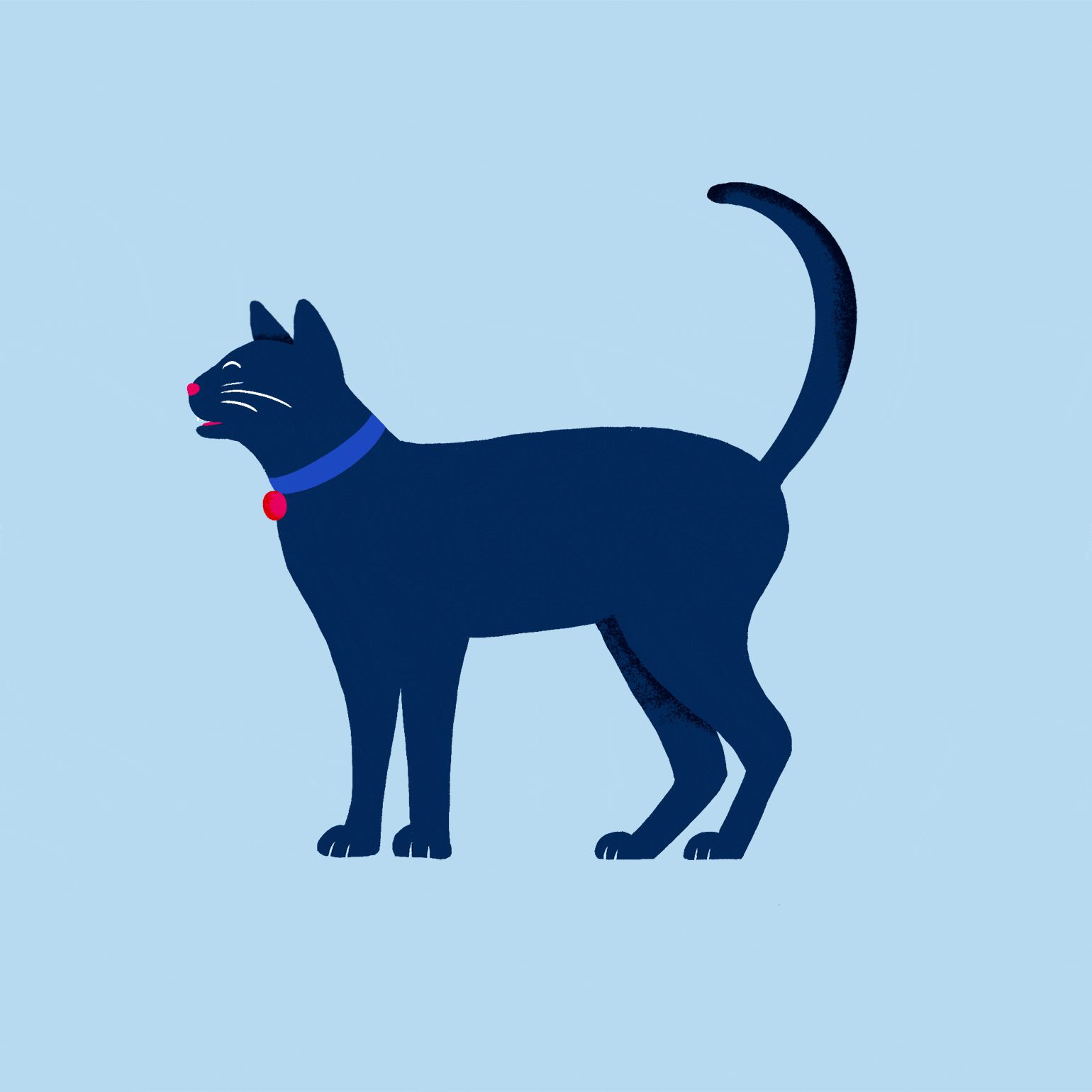
Meowing
Most commonly directed at humans, meowing is the main type of vocalization for cats. According to Lilly, a meow is a care-seeking behavior and means your cat wants something. It could be food, cuddles, attention, or for you to open the blinds so they can watch the birds. Whatever your cat wants, they are meowing to let you know they need it. Right now. Find out more about why cats meow at you.
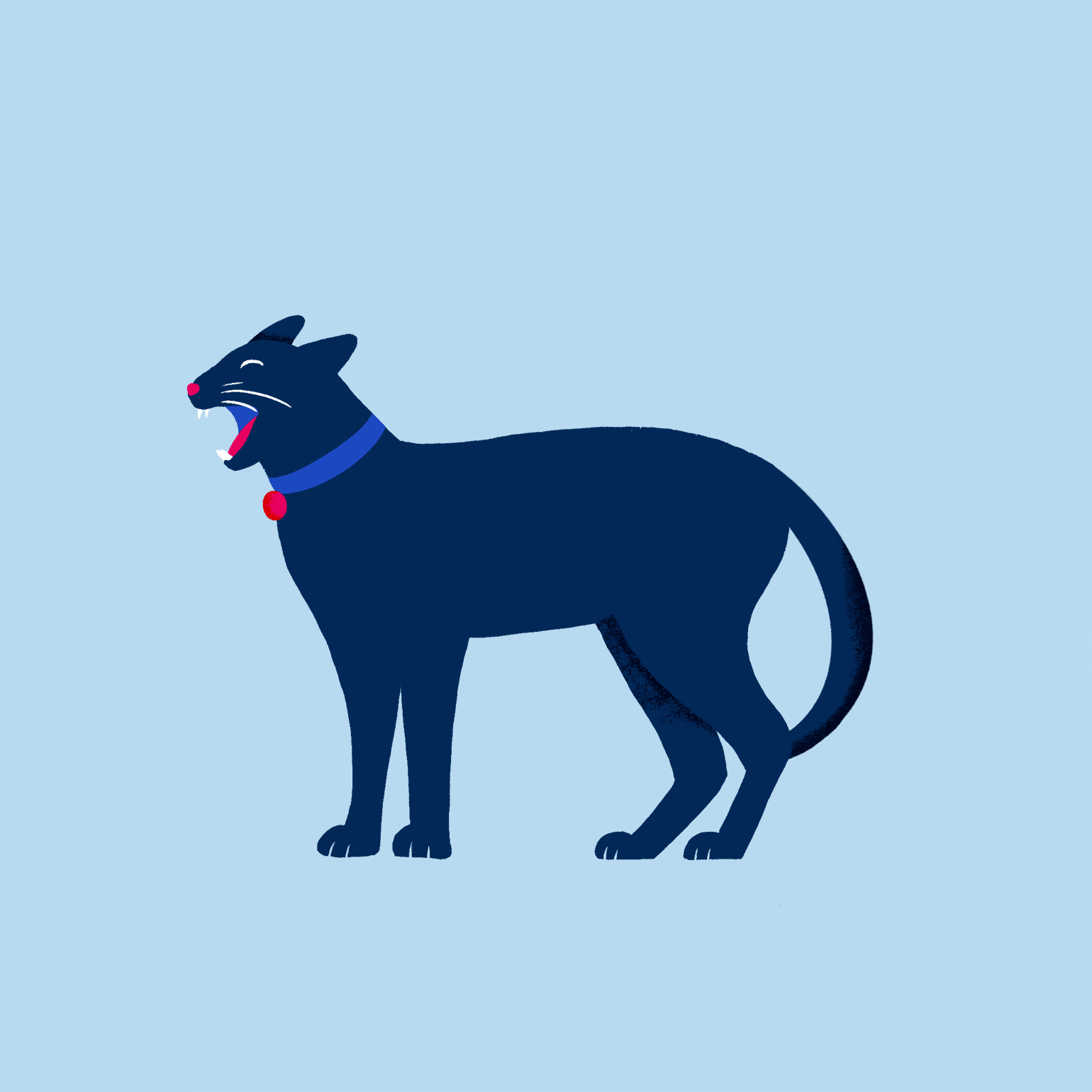
Hissing
A cat who is hissing may be afraid, in pain, surprised or stressed, either by another cat or something else in the area. This cat behavior is pretty easy to interpret: A hissing cat is not a happy cat.
Learning more about your furry friend’s unique cat language can help you communicate better with your cat, and improve your responsiveness as a cat parent, too. When your cat is hurt, scared, or stressed, you will know what to look for and can help.
Want to learn more about your cat’s secret messages? Check out these ways cats say “I love you.”
Expert input for this story was provided by M. Leanne Lilly, DVM, DACVB, assistant professor, behavioral medicine at The Ohio State University Veterinary Medical Center.
What's Your Pet Saying?
Share:
